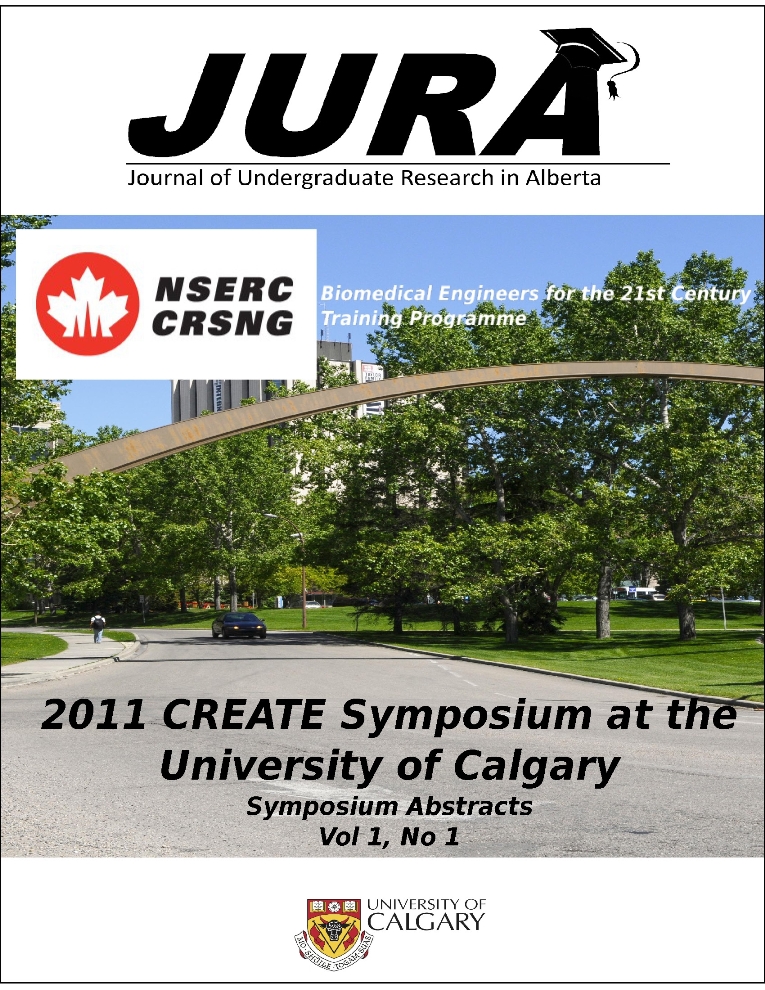Untitled
Keywords:
Vessel Elasticity, Vascular ModelingAbstract
Vascular smooth muscle cells are in a constant state of flux between their two primary phenotypes, contractile and synthetic [Davis B.]. The functional phenotype is contractile, while the synthetic phenotype may be linked to vascular disease, such as aneurysms. The purpose of this study is to investigate the effect of substrate stiffness on smooth muscle cell morphology and phenotype. The research is divided into two parts, construction of a stress vs. pressure model for multiple concentrations of collagen gels (the substrate) and comparison of cell seeded gels to this model. The model has been completed and it indicates an almost linear relationship between stress and pressure difference across a collagen membrane. The calculated moduli of elasticity for 1mg/ml, 1.5mg/ml and 2mg/ml collagen gels are 86 Pa, 109.4 Pa and 177.6 Pa respectively. This shows that stiffness increases with collagen concentration. The significance of knowing the relative stiffness of the vascular smooth muscle cell substrate is that it may relate to the development of cardiovascular disease. Our arteries stiffen with age, so it is possible that cells begin to malfunction due to different substrate stiffness. Of course, the development of the pathology is multifactorial, so we cannot pinpoint a single individual culprit, but it is important to understand the behavior of the individual components of the natural vessel under different condition. Likewise, when developing an artificial vessel it is extremely important to mimic the natural environment (including stiffness) or we risk having cells that cannot function properly. Rat aortic smooth muscle cells were cultured under sterile conditions in a laminar flow hood and brought to their fourth passage. From this point the cells were seeded in collagen gels at different concentrations. A double staining procedure will be used to highlight the collagen type-1 and f-actin fibers within the extracellular matrix of the cells to aid in illustrating the mechanism by which the cells interact with their substrate.
References
Downloads
Published
Issue
Section
License
Authors retain all rights to their research work. Articles may be submitted to and accepted in other journals subsequent to publishing in JURA. Our only condition is that articles cannot be used in another undergraduate journal. Authors must be aware, however, that professional journals may refuse articles submitted or accepted elsewhere—JURA included.


